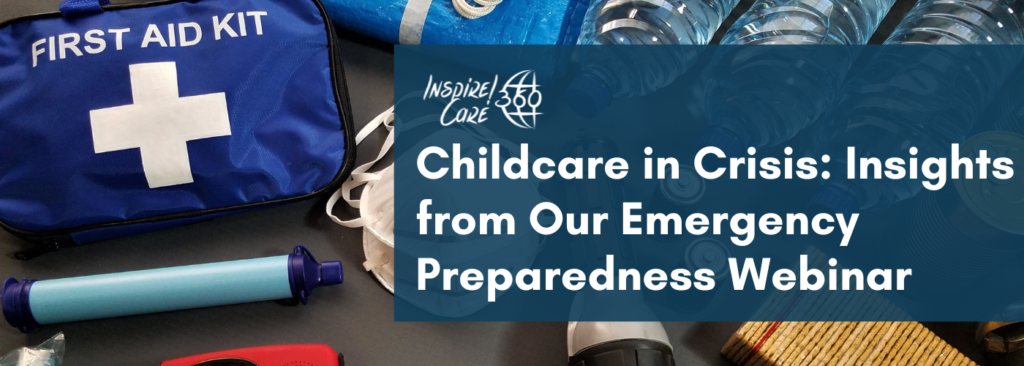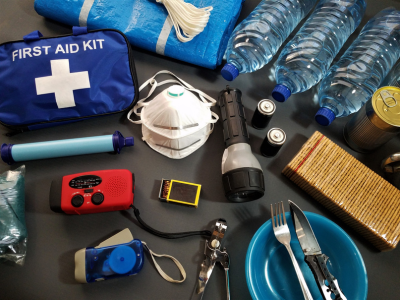
Childcare providers play a crucial role in the lives of children and families. Ensuring the safety and well-being of children under their care is a responsibility that comes with its unique set of challenges. Emergencies, both large and small, can disrupt the smooth operation of childcare facilities. To shed light on this critical issue, we hosted a webinar on September 13th titled “When Everything Goes Wrong: Navigating the Unforeseen in Childcare,” featuring experts Kate Woodward Young, M.Ed., and Carrie Casey. In this post, we’ll explore the key takeaways from the webinar and discuss essential strategies to prepare for and handle unexpected childcare emergencies.
Recommended Reading: Lola and the Hurricane
Kate and Carrie recommended their book titled “Lola and the Hurricane” to help understand and prepare for emergencies. You can find it on Amazon.
Childcare providers face unique challenges when it comes to emergency preparedness. The insights from our webinar with Kate Woodward Young and Carrie Casey emphasize the importance of having a plan in place, conducting drills, and ensuring everyone is prepared to handle unforeseen circumstances. By implementing these strategies and recommendations, childcare providers can better protect the children and families they serve. Are you ready to take the necessary steps to enhance your childcare facility’s emergency preparedness? Share your plans and thoughts with us on our social pages, and don’t forget to check out the recommended reading authored by Kate and Carrie. Together, we can create safer environments for our children.
From Overwhelmed to I Got This
512-347-9658
kate@texasdirector.org
Carrie Casey
512-748-4788
carrie@texasdirector.org
Emergency Preparedness: Be Prepared
The first and foremost takeaway from the webinar was the importance of emergency preparedness. Being prepared means having a well-thought-out plan in place for various scenarios. Kate and Carrie emphasized that childcare providers should not wait until a crisis strikes to start thinking about emergency preparedness.Keeping Kids Engaged During Emergencies
During an emergency, such as the need to shelter in place or relocate to a different area, it’s essential to keep children engaged. This might involve having a plan for moving to a gym, a parking lot, or another safe location. Children can easily become anxious or scared during emergencies, so having activities and a supportive environment can make a significant difference.Conducting Preparedness Drills
Preparedness drills are a vital component of emergency planning. These drills should cover a wide range of scenarios, including natural disasters, medical emergencies, economic challenges, legal issues, and personal emergencies. By practicing these scenarios with your childcare team, you ensure that everyone knows their role and responsibilities in the event of an emergency.Maintaining a Fire Safe
A fire safe is a critical element of emergency preparedness. It should be easily accessible and regularly updated. Inside your fire safe, include essential items such as emergency contacts for staff and families, utility company information, insurance details, accounting records, and vendor lists. Also, consider keeping an external hard drive and relevant documents in a 3-ring binder or notebook. These documents should be stored both on-site and off-site for added security.Creating Standard Operating Procedures (SOP)
Standard Operating Procedures (SOP) serve as a roadmap for handling emergencies. Kate and Carrie recommended approaching SOP creation like a recipe: list your “ingredients” (components of the SOP) at the top, followed by step-by-step instructions. Review these procedures with your team regularly to ensure everyone is on the same page.Succession Planning
One often overlooked aspect of emergency preparedness is what happens if something happens to the childcare owner or leader. Are your team members ready to follow established procedures and processes? Kate and Carrie stressed the importance of having clear SOPs in place to ensure the continuity of care in such situations.Emergency “To-Go Bags”
Emergency “To-Go Bags” are essential for quick evacuation. Keep a backpack in each room of your childcare facility specific to the age group and location. Items to include in these bags are backup phone batteries, emergency contacts, medical supplies like epinephrine pens, signaling devices, games for children, and snacks. Create an index card with the top three items to grab in case of an emergency, such as a case of water, external hard drive, and granola bars.Recommended Reading: Lola and the Hurricane
Kate and Carrie recommended their book titled “Lola and the Hurricane” to help understand and prepare for emergencies. You can find it on Amazon.
Financial Preparedness
Emergencies can have a significant impact on your finances. To prepare, consider adding cash and prepaid debit cards to your emergency “To-Go Bags.” Additionally, maintain a thorough inventory of all items in your childcare facility, keep receipts, and share the responsibility of taking photos of on-site items with your team. Having this information readily available will facilitate the insurance claims process.Assess Your Insurance Coverage
Ensure you have the right insurance coverage in place. In the event of an emergency, your insurance provider will ask for details about what you’ve lost and its cost. Document everything and keep records organized for easy reference.Childcare providers face unique challenges when it comes to emergency preparedness. The insights from our webinar with Kate Woodward Young and Carrie Casey emphasize the importance of having a plan in place, conducting drills, and ensuring everyone is prepared to handle unforeseen circumstances. By implementing these strategies and recommendations, childcare providers can better protect the children and families they serve. Are you ready to take the necessary steps to enhance your childcare facility’s emergency preparedness? Share your plans and thoughts with us on our social pages, and don’t forget to check out the recommended reading authored by Kate and Carrie. Together, we can create safer environments for our children.
Recommended Reading Authored by Kate & Carrie:
Lola and the HurricaneFrom Overwhelmed to I Got This
Contact
Kate Woodward Young512-347-9658
kate@texasdirector.org
Carrie Casey
512-748-4788
carrie@texasdirector.org


